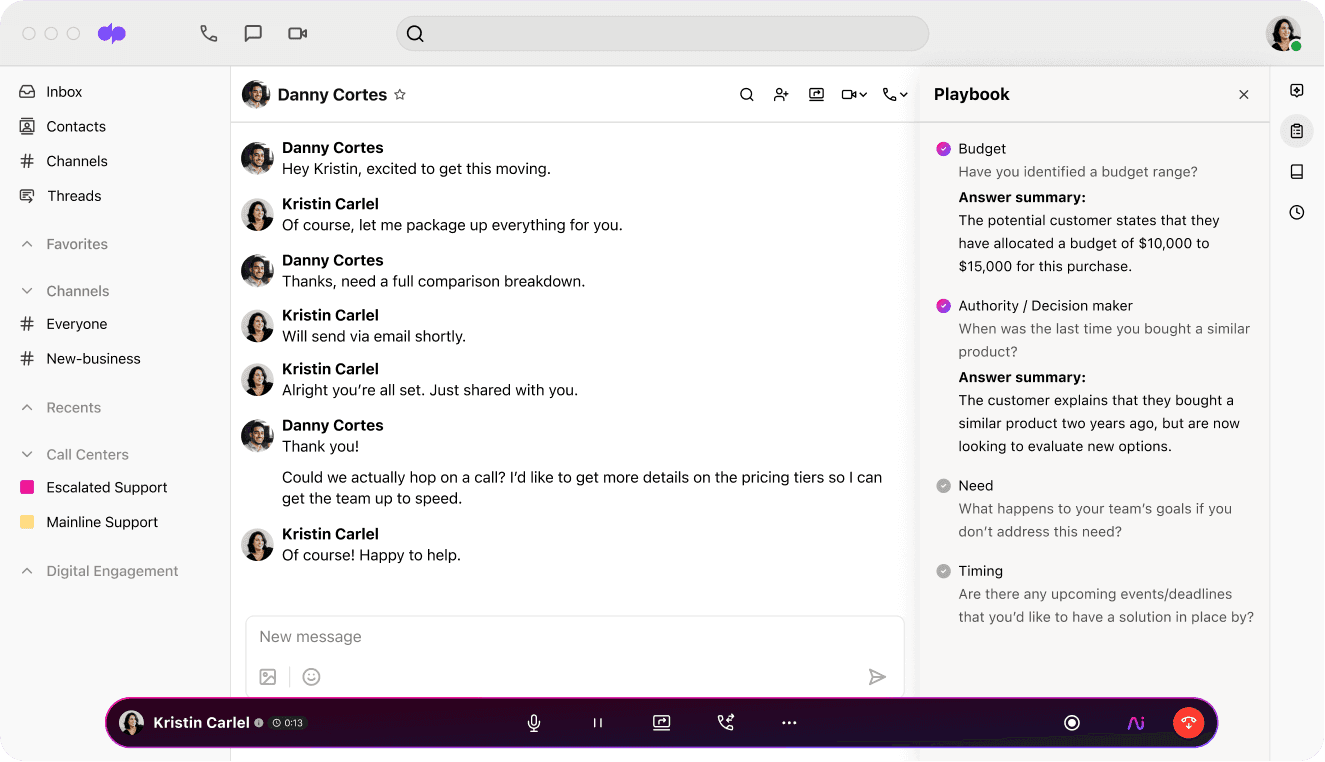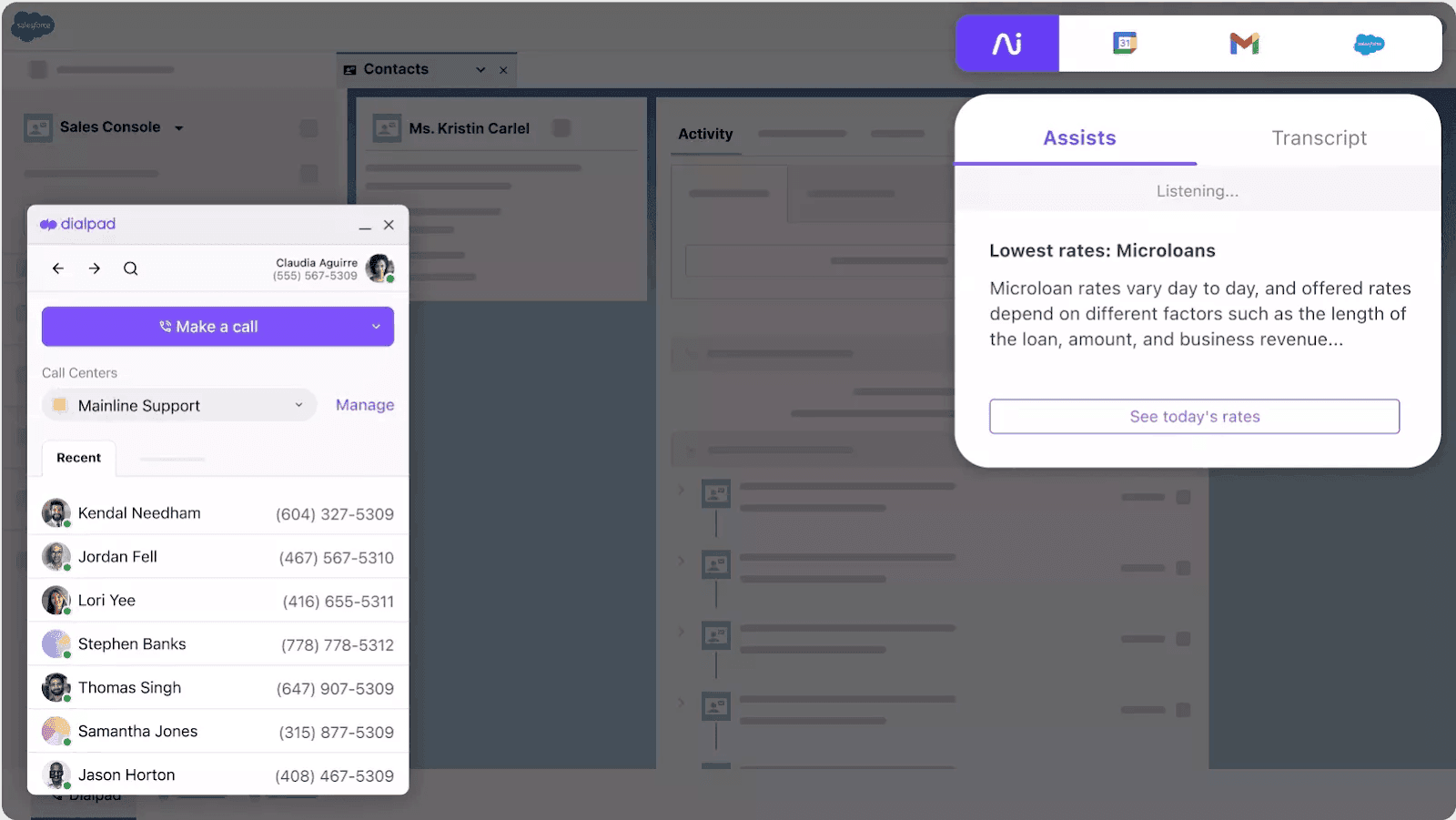
Tags
Share
Sales analytics is a crucial part of your business growth and sales intelligence. Analytics in sales means that you know where your strengths and weaknesses are in terms of your sales process and team’s productivity, proficiency, and performance.
Because knowledge is power, the more you know about your sales analytics, the better you can be at improving them and growing your business.
What is sales analytics?
One common sales analytics definition is that it’s the process of collecting, analyzing, and interpreting sales data to gain insight into the different aspects of your sales activities.
You can understand what happened, why it happened, predict what may happen, and figure out what’s the best solution or action to take.
This, in turn, helps organizations make more effective data-driven decisions, identify opportunities for growth, and enhance overall sales performance and sales strategy.
Why do sales analytics matter?
Sales analytics matter because effective sales analytics can help sales teams and businesses continually improve their sales processes.
Sales data analytics can help you make decisions based on data and other quantitative sources. With sales data analytics, you can better prioritize your funds and labor, improve your sales performance and processes, better understand your customers, optimize your sales funnel, and improve your real-time decision making.
Sales metrics to track
In terms of sales analytics, there are several key sales metrics for your business to track. Sales metrics also come in several categories, each with their own metrics to track, including customer satisfaction, conversion rate, monthly recurring revenue, customer lifetime, value, etc.
Learn more about which sales metrics to track here.
Sales analytics use cases
Because sales analytics can be used in different parts of the sales process, there are many areas for and uses of sales analytics. Sales analytics can be used to predict future prospects’ business potential, identify upsell opportunities, determine which products are popular, and improve marketing messages.
Sales analytics can help you identify stalled deals and figure out how and when to convert your leads. It can help you analyze transactions to see which products are underperforming overall (or only in specific segments), figure out why, and improve your products or cut them altogether if they’re not worth producing or supporting.
This means decreased costs and more time and resources spent on more revenue-generating products.
With sales analytics, you can see which sales channels bring in the most revenue, what makes sales prospects move more quickly through a pipeline or drop out of the process, what pricing range customers feel comfortable with, and when to check in with a sales prospect.
Identifying the most lucrative sales channels
Sales analytics can help you identify the most lucrative sales channels. If your organization uses a combination of resellers, in-store retail, online ecommerce, and direct sales, sales analytics can help you identify which of these channels bring in the most revenue. Once you know which sales channel is the most lucrative, you can double down on the best performing channel to increase your revenue.
Sales pipeline analytics
Depending on your product, your sales pipeline can vary between days, months, and even years. Understanding how your sales prospects move through your pipeline is essential for repeating success and even improving it.
How quickly do your prospects move through your pipeline, what makes the prospect stall or even drop out of the pipeline, and could your pipeline be quicker are all questions that sales pipeline analytics could answer for you.
Once you analyze your sales pipeline, you can determine how to improve your sales efficiency.
Pricing analytics
Sales analytics plays a big role in pricing analysis. With sales analytics, you can get a better idea of how your product and/or services pricing impacts sales processes and conversion rates.
With pricing analytics, you can see what price range customers have felt comfortable paying at, whether there might be potential room for growth in terms of your prices, and what feature or service customers find most valuable.
By analyzing how your prices are impacting your sales processes and conversion rates, you can better adjust your pricing or sales strategy to increase revenue in the short and long term.
Predictive analytics
Timing is very important in sales.
That’s why another important area of sales analytics is predictive analytics. Predictive analytics uses data to forecast when best to follow up with prospects or take other actions, such as giving the potential customer space to think.
Predictive analysis can suggest when might be a good time to send an email or do a follow-up call. Knowing the right time to check in with a prospect could make or break a sale. You can leverage your historical sales data, perform predictive analysis, and set alerts for sales reps to check in with prospects.
AI in sales is particularly good at predictive analytics because AI is great at analyzing large amounts of data, recognizing patterns, and making predictions. On top of that, AI in sales can be automated, which is why you should look into how to use AI to improve your predictive analytics capabilities.
What to look for from sales analytics software solutions
If you want to dig deeply into your sales analytics, you’ll need the right sales analytics tools. The right software solutions are crucial to effective sales analytics.
Keeping in mind that sales analytics examples include market research analytics, product sales analytics, sales effectiveness analytics, sales pipeline analytics, and churn analytics, you’ll want a software solution that can do it all.
How do you know you’ve found the right sales analytics software solutions? You’ll want a sales analytics tool that not only can help you analyze data, but also features usability, ease of integration with other tools, and visualization of data and reporting.
Usability
The best sales analytics tools are highly prized for their usability. After all, if it’s hard to use or doesn’t have the necessary features to do its job, you’ll be hard pressed to find managers or sales reps willing to use the analytics tool.
Therefore, one of the most important aspects of a sales analytics software solution is usability. The more intuitive it is to use, the more it’ll be used, and the more cost effective and potentially revenue generating it will be.
Your tool should make it simple for your sales teams instead of creating more work. If your sales analytics tool were a unified system, like Dialpad Ai Sales Center, it could help teams work better together towards a common goal: more sales.

Ease of integration with other tools
Another must in terms of a sales analytics software solution is ease of integration with other tools. For example, you’ll want your sales analytics tool to be able to integrate easily with your outbound calling/contact center solution, your CRM, and other tools you use frequently.
When your sales analytics tool integrates with the other software you use, you can have all of your tools in one convenient place instead of having to import and export data, open another application, learn another software program, etc. By being able to access your sales analytics in the same place as your contact center, you’ll save time and be able to leverage both tools in a more effective way.
Dialpad Ai Sales Center offers integration with other tools as well as sales analytics capabilities. By having a unified place for all of your needs, your agents and reps can have access to all of the cutting edge analytics information they need, when they need it, all in one convenient place.

Visualization of data and reporting
Finally, being able to help users effectively visualize the data being reported is an overlooked but important feature of any sales analytics software solution.
Going back to usability, your sales analytics software of choice should have insights that are easy to view and understand by way of graphs, charts, and other visuals. Reports should be easy to customize and data should be easy to understand within the software.

Sales analytics best practices to apply in your sales teams
Once you know how analytics can improve sales, you can use the right solutions to get the most from your sales analytics. So what else should a business do to get the most from their sales analytics?
First, you should clearly define your sales analytics objectives. Once you know what your objectives are, you should set a schedule for analyzing your sales data and stick to it. Finally, for best results, you should continually act upon the insights that you receive from your sales data analytics.
Clearly define your sales analytics objectives
How to make improvements from sales analytics? The first step is to clearly define your sales analytics objects and make sure they’re specific and measurable.
For example, if you have a monthly sales goal of increasing the number of new customers going into your sales pipeline every month, you could set a specific goal of gaining 200 new potential customers each month. If you have 50 sales representatives, you can evaluate whether your objective is realistic or not.
Now that we have a specific goal, we can see how measurable our objective is by calculating how many new customers each sales representative needs to bring in each day or week to gain these 200 new customers. Is it likely that each rep can bring in four customers a month? Depending on your field, that could be a resounding yes or no.
By making your sales analytics objective specific and measurable, you can see right off the bat whether your goals are achievable. While your sales analytics data can tell you how many customers you could expect, it’s up to you to set reasonable expectations based on the information you’re given.
Set a schedule for analyzing your sales data and stick to it
You’ll also want to set a schedule for analyzing your sales data and stick to it for the best results. While it may seem tempting to push back your sales data analysis when a fire breaks out somewhere else, sticking with the schedule means that you’ll consistently have the most up-to-date information on your sales analytics and can help you pivot or change your strategy when necessary.
If you find yourself getting off schedule and holding off on sales data analysis, you may miss opportunities to tweak your sales strategies as they arise. By the time you find yourself having time to look at your sales data, you may find that a ship has sailed or your information is out of date.
Therefore, even if your schedule may seem to be overflowing with meetings on the day you set aside for sales data analysis, it’s better to stick to the schedule and put the information you learn to good use.
Continually act upon the insights you find
Once you’ve set specific and measurable objectives and consistently analyzed your data, you’ll want to establish a strong sales intelligence base and act on the insights you find.
Since you’ve already set aside time every week, month, or quarter to look at your sales analytics data, you should take advantage of your newfound knowledge by continually improving and streamlining your sales processes and workflows based on the analytics.
After all, you’ve already invested your time into dissecting the data that you’ve gained. It would only make sense to act on the information you’ve learned to improve your sales pipeline and increase your revenue stream.
On top of improving and streamlining your workflow, you also want to iterate and improve on the analytics itself over time. Because AI learns as it goes and improves its performance over time and with more information, you should keep iterating and teaching your sales analytics software.
Improve your sales analytics with Dialpad Ai Sales Center
Improving your sales analytics is more of a process than a silver bullet. While it’s not always easy to find time to analyze your data and act on the insights, you’ll find that once you master setting your sales analytics objectives and iterating on your sales analytics, the process might literally pay dividends.
Dialpad Ai Sales Center can help you with your sales analytics needs. Not only is it intuitive and usable, it comes with easy visualization of data and reporting, is powered by Ai, and integrates with other tools for a unified place for your sales analytics needs.
If you’re unsure about how to track or use your sales analytics data, check out Dialpad Ai Sales Center to see how you can get started with getting your sales analytics done right.









